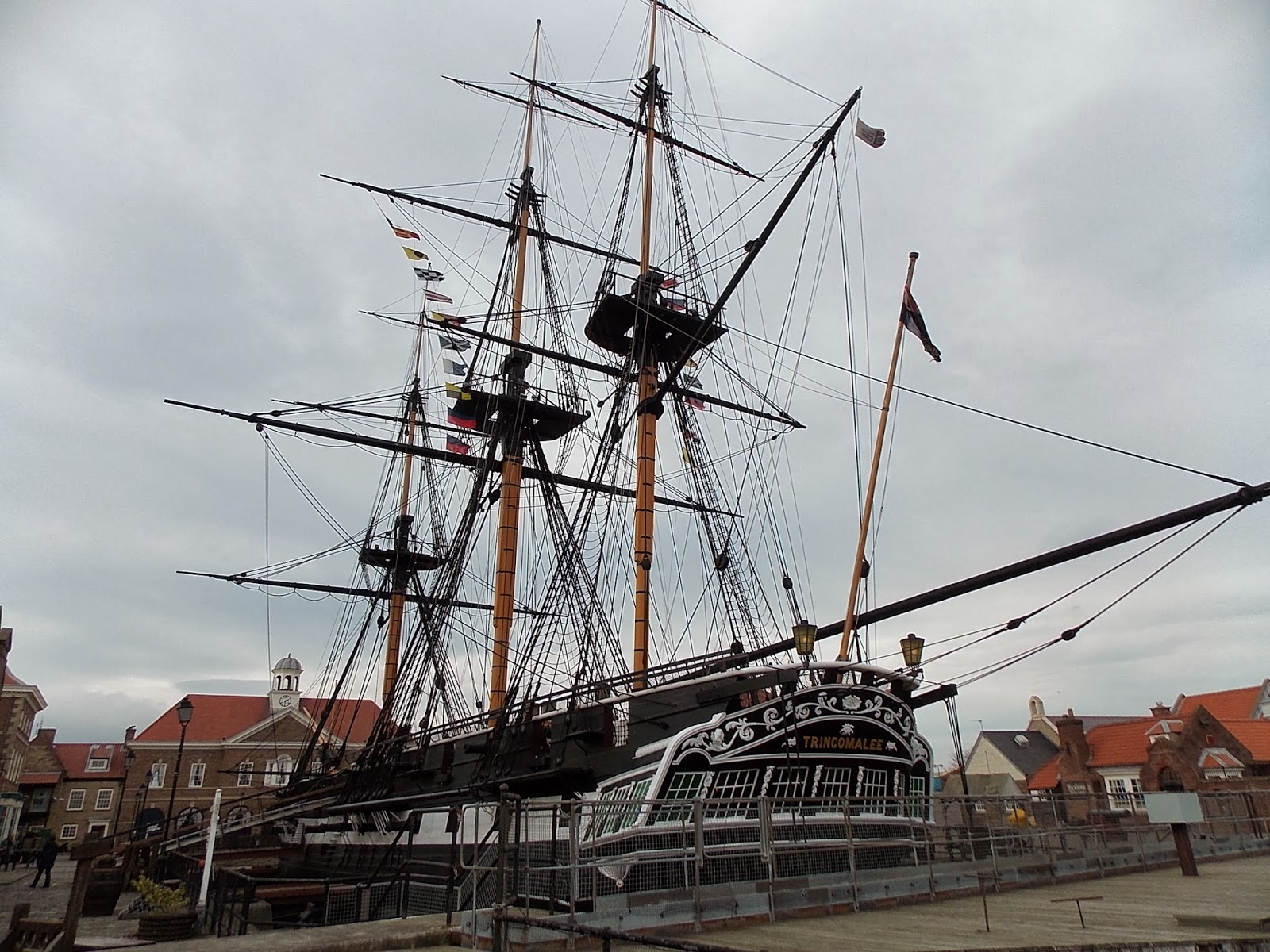Last Saturday I joined three other Franklin expedition aficionados in a very enjoyable visit to Hartlepool's Historic Quay, home of the beautifully restored Leda class frigate HMS Trincomalee.
Trincomalee is in a sense a big sister to Crozier's HMS Terror, both ships were ordered during the War of 1812. While Terror played a memorable role in that conflict, Trinco was not launched until 1817 due to the plans going astray en-route to Bombay where she was to be built.
By happy coincidence, Franklin's HMS Erebus also has a surviving Leda class sister:HMS Unicorn - preserved at Dundee, Scotland. I hope to visit her too some day. Unicorn and Erebus were launched just two years apart, in 1824 and 1826 respectively.
Although these frigates were much bigger than Franklin's ships, a visit to either gives a vivid impression of life on board.
Comparing constructional details of the two frigates we can see that Unicorn has the iron knees introduced during Sir Robert Seppings tenure as Surveyor of the Navy.
 |
| HMS Unicorn 1824 |
Similar features can be seen in the well known engraving of Fitzjames' cabin.
Trincomalee uses an earlier pattern of iron strapped wooden reinforcement.
 |
| HMS Trincomalee 1817 |
If the ice-crushed wreck of either ship were found these details might aid identification.
The key significance of HMS Trincomalee to Franklin buffs is that in 1854, under the command of Captain Wallace Houstoun, she played a supporting role in the search for Franklin by carrying supplies to the West coast of North America for the ships looking for Franklin via Bering's strait. Thus, as well as being the oldest British warship still afloat, she is the sole survivor of the Franklin saga.

.jpg)



